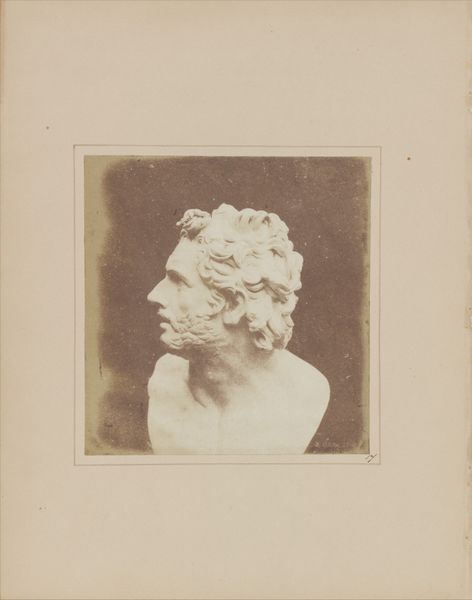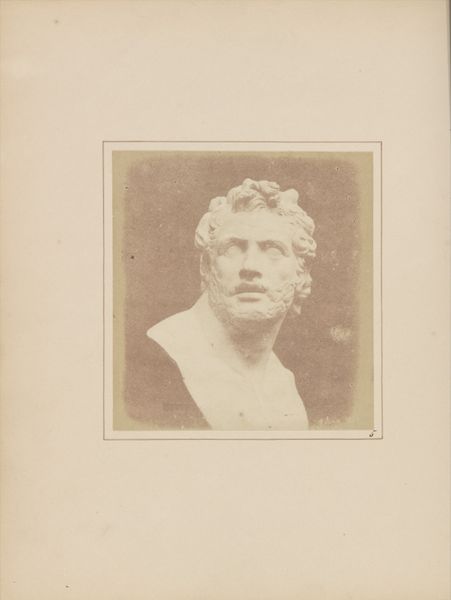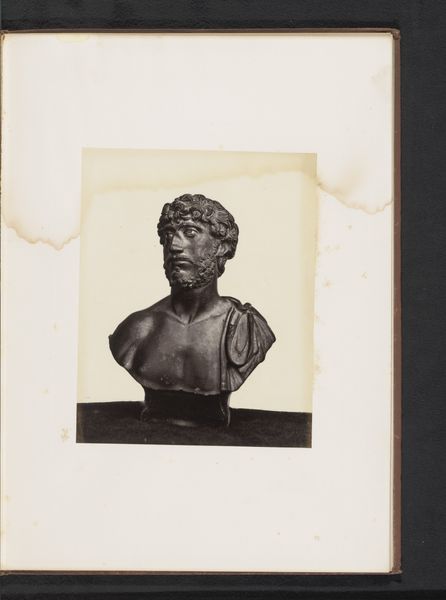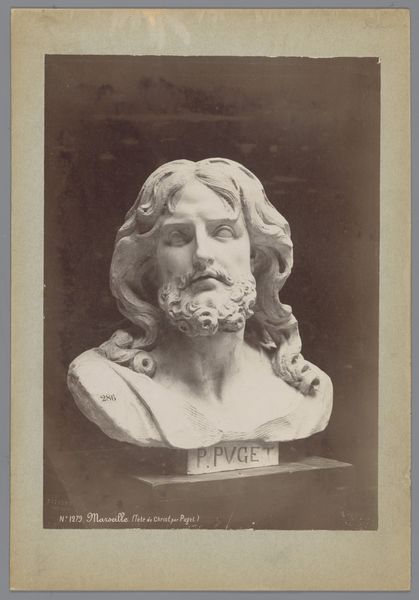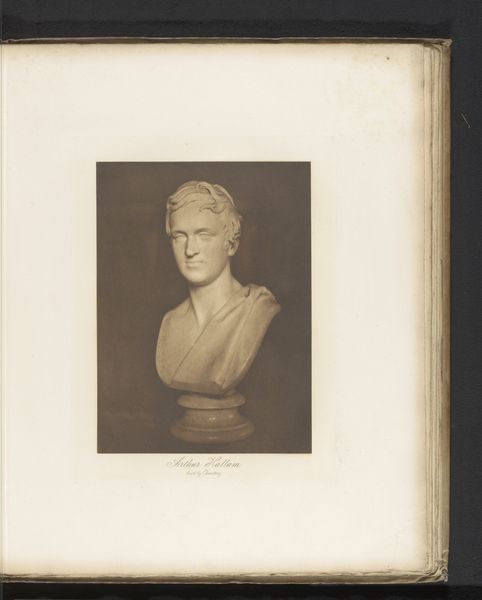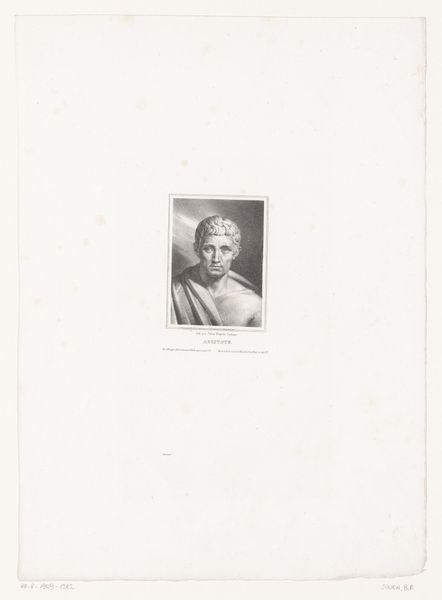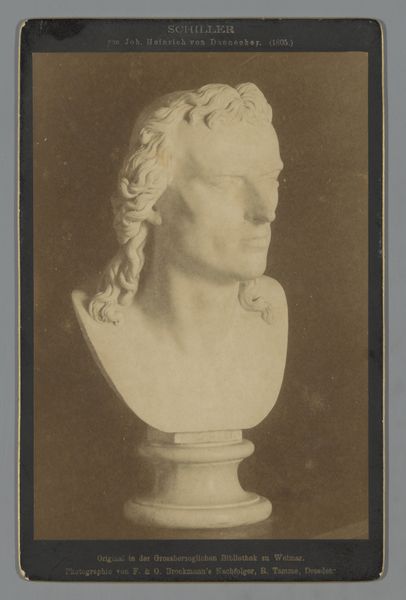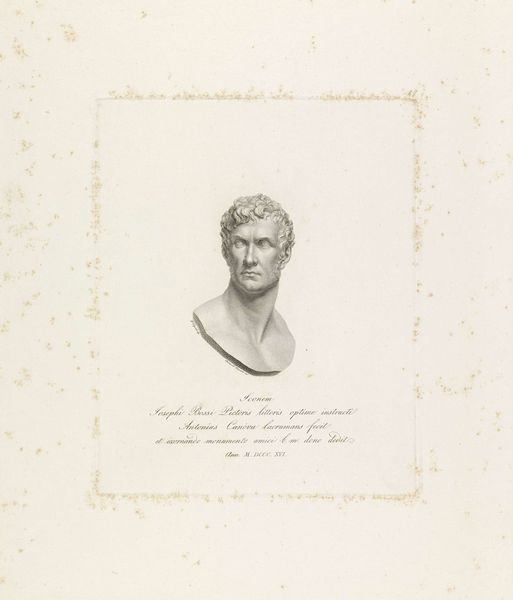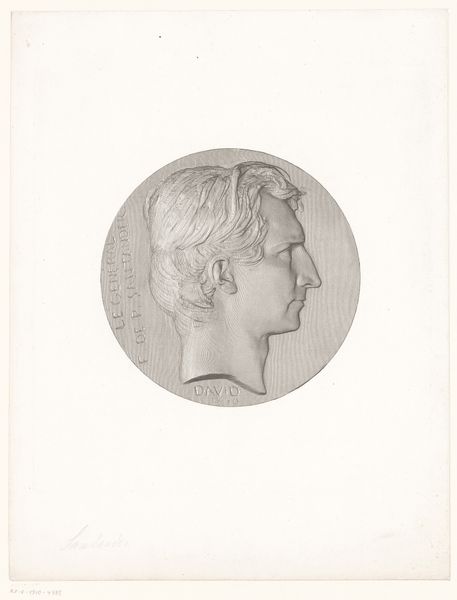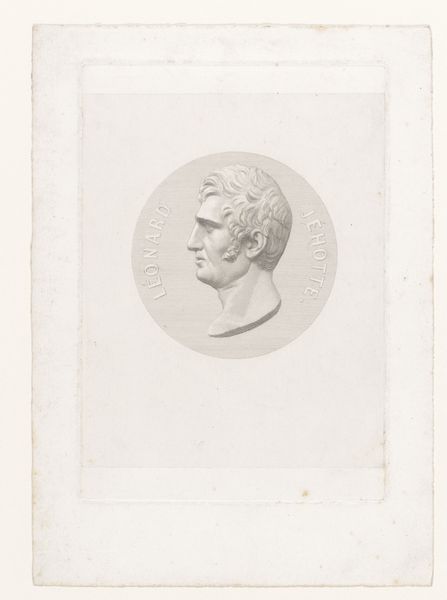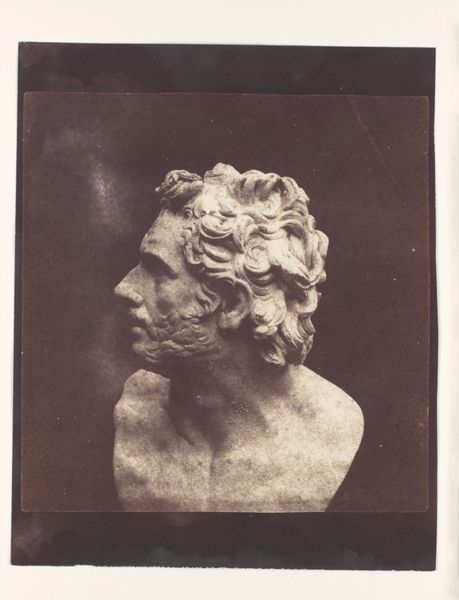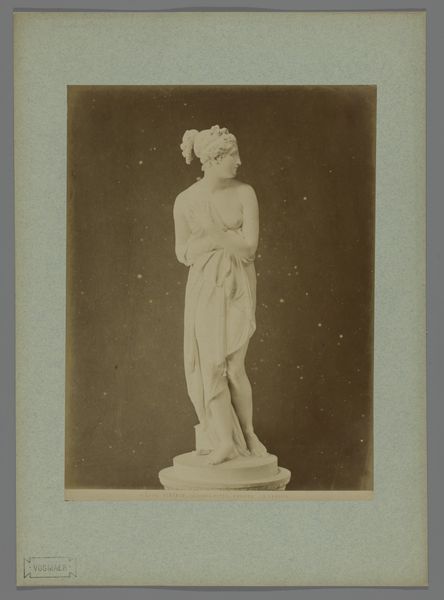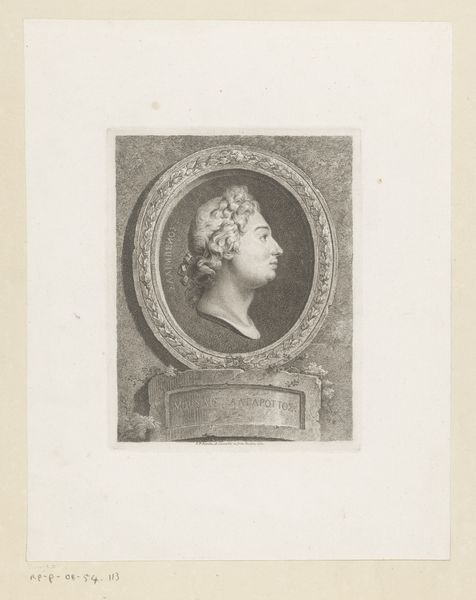
print, paper, photography, gelatin-silver-print
#
portrait
#
16_19th-century
# print
#
classical-realism
#
paper
#
photography
#
classicism
#
ancient-mediterranean
#
gelatin-silver-print
Dimensions: 14.9 × 14.5 cm (image); 23.2 × 18.9 cm (paper)
Copyright: Public Domain
William Henry Fox Talbot captured this photograph of the Bust of Patroclus using the calotype process, one of the earliest photographic techniques, rendered in tones of sepia. The bust is set against a darker, square backdrop, which emphasizes its form and texture, and the coarse paper texture gives the image a tactile quality, enhancing the sense of a three-dimensional object captured in two dimensions. Talbot’s choice of subject matter and photographic technique invites us to consider the complex interplay between classical ideals and technological innovation. Photography, as a new medium, was often used to replicate classical sculptures, engaging with questions of authenticity and representation. The calotype's soft focus and tonal range imbue the classical form with a modern sensibility. Consider how Talbot uses light and shadow to define the contours of the bust, a formal quality that reflects the artistic and philosophical concerns of his time, bridging classical sculpture with early photographic practices. This tension between the old and the new encourages us to interpret the artwork beyond its aesthetic appeal, inviting us to ponder the evolving nature of art and its media.
Comments
No comments
Be the first to comment and join the conversation on the ultimate creative platform.
